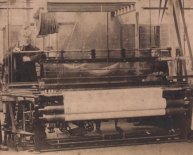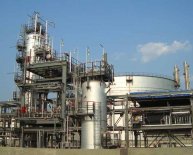
Pictures of cotton textile industry
|
(Lowell Museum Collection/Lowell Historical Society) (Lowell National Historical Park) ike a medieval fortress or great cathedral, the structure dominates all that is around it. A great wall separates it from the Merrimack River. Within that rampart, thick, red brick walls, punctuated by windows of many shapes and sizes, rise from the ground, surrounding interior courtyard spaces that can be entered only by crossing a single bridge over the deep water of a canal. Brick or wood stair towers placed along the exterior of the walls provide the only means of entry to upper floors. A single bell tower dominates the central courtyard. For more than 100 years the bell called people to this place on a daily basis, not to protect the city from invaders or to worship, but to work. The sounds from the complex were not those of battles or church choirs, but of machinery clanking and rumbling 10 to 14 hours a day. Rushing water ran water wheels and turbines, and bells constantly clanged to regulate life's daily activities. This was the Boott Cotton Mills complex at Lowell, Massachusetts. It was typical of what some call a "cathedral of industry" where people from all over the world toiled for the single purpose of mass-producing a consumer product: textiles. The Boott Cotton Mills complex contains mills built from the mid-1830s to the early 20th century, reflecting the early use of waterpower, steam power, and finally electric power. Changes in technology and production capability influenced the development and appearance of the millyard over time. In essence, the Industrial Revolution's transformation of America from an agrarian-based society to an industrial society can be seen through the physical development of the Boott Cotton Mills from 1835 through the early 20th century. Today, the restored mill complex houses the Boott Cotton Mills Museum, a part of Lowell National Historical Park. |

















